A Visit to the Himba Tribe – What I Wish I’d Known
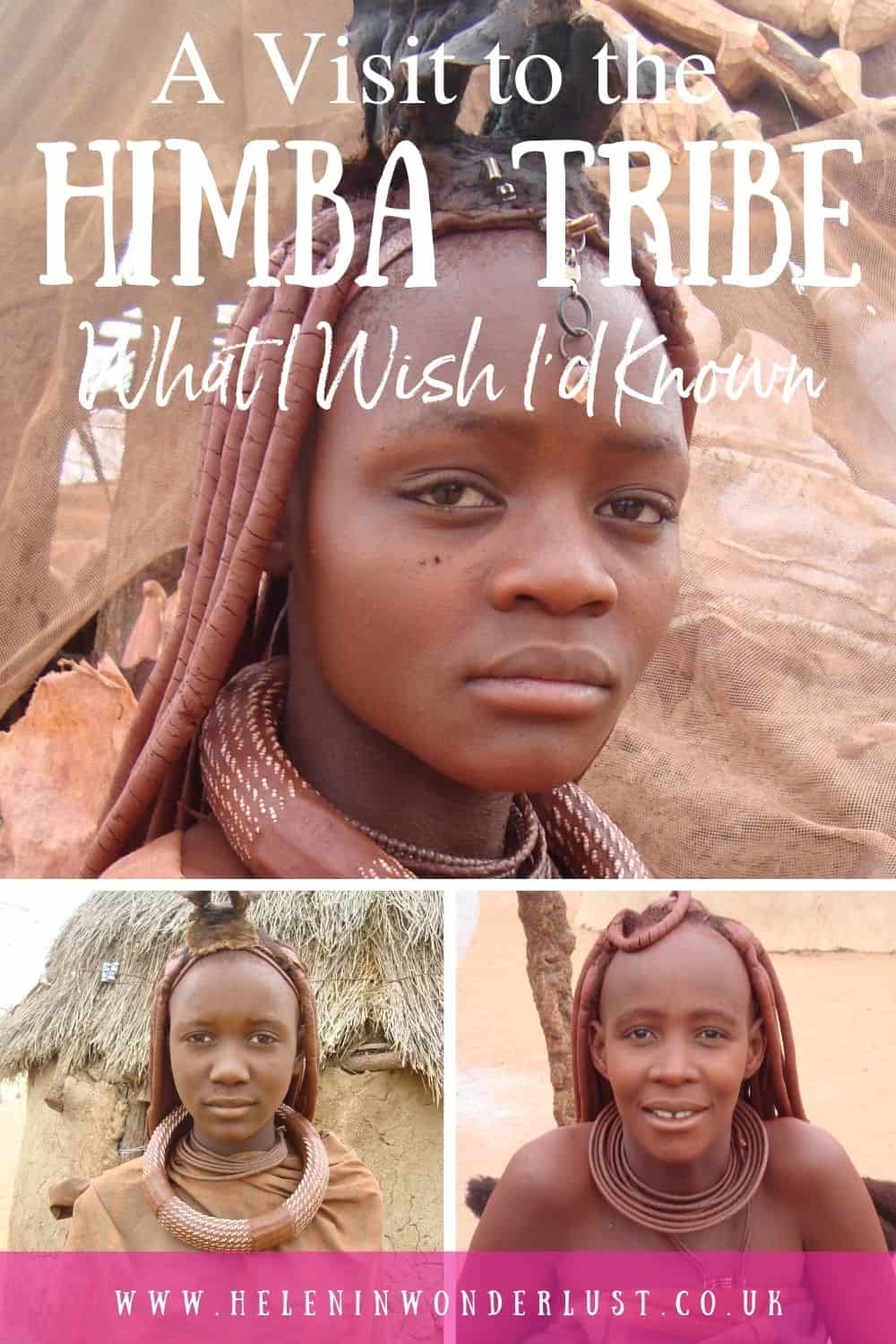
I visited the Himba tribe for the first time on my first trip to Namibia in 2009.
The Himba are semi-nomadic people who live in northern Namibia and traditionally depend on cattle and goats for their livelihood. The women are striking in appearance, covering themselves in a mixture of butter and ochre called otjize, which is what gives their skin and hair its orange/red tint.
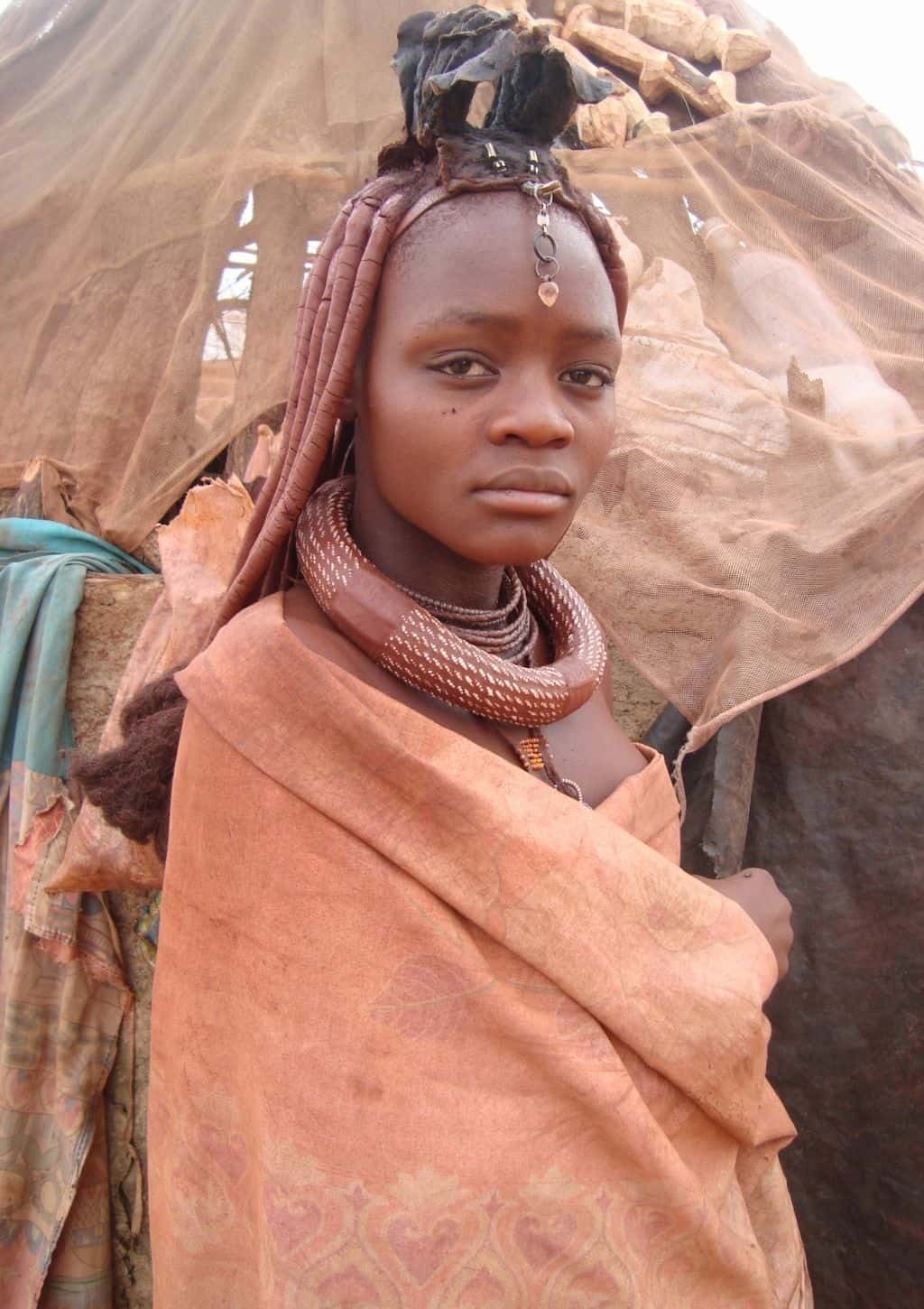
The Himbas ideal of beauty is inspired by the orange/red glow of the earth, something synonymous with the African continent. The lifeblood of all.
We spent a couple of hours in the village, learning about the Himba tribe culture and as usual, I ended up with a number of children attached to each arm and leg, all wanting to touch my hair!
Other Namibia posts you might enjoy…
- A Epic 2-Week Namibia Itinerary (Plus Map, Tips & Best Places to Visit)
- The Best Hostels, Guesthouses & Campsites in Namibia
- ANNOUNCING! The Rock My Namibia Adventure
- Highlights of the Rock My Namibia Adventure (August 2018)
- 35 Amazing Things To Do in Namibia
- The Best Places for Safari in Southern Africa
- My Complete Africa Packing List (Plus FREE Africa Packing Checklist)
Please Note: Some of the links in this post are affiliate links, which will earn me a small commission at no extra cost to you. Affiliate sales help with the running costs of this site, so thank you for your support!
A Visit to the Himba Tribe – What I Wish I’d Known
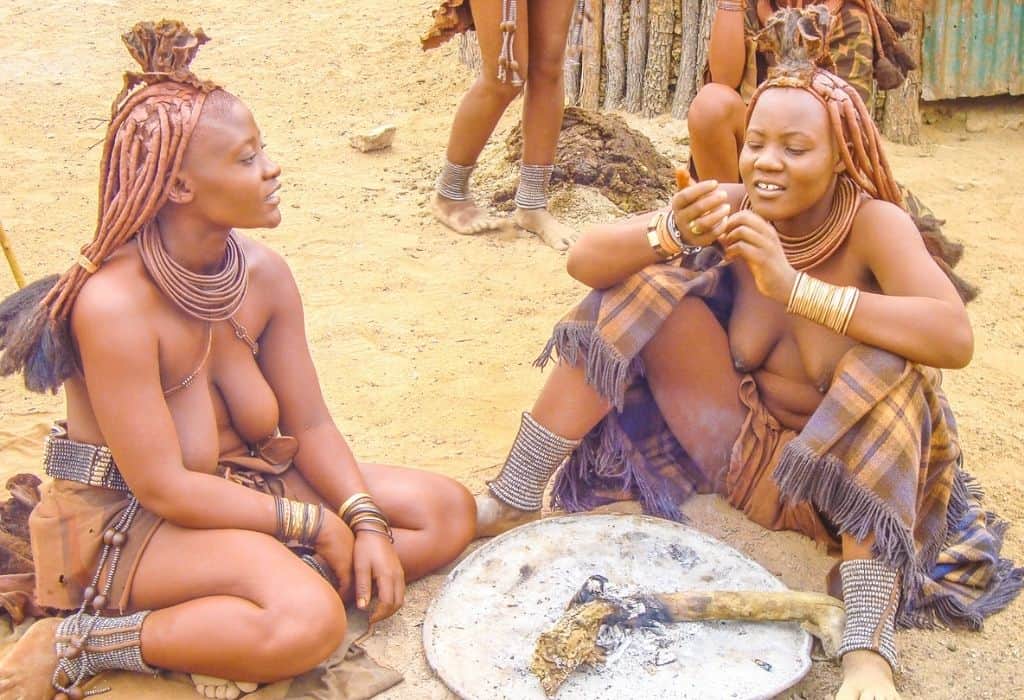
Our guide said it was fine to take all of the pictures we wanted, but I feel that it’s always important to ask. The women were very happy to be photographed and posed proudly for the camera.
We were told that the Himba women never wash in their lives. Rather, they ‘smoke’ themselves clean using herbs that give their skin an almost musky/woody smell, before reapplying a new layer of otjize.
The morning beauty regime can take up to three hours a day. It’s a good job I am not a Himba woman, I would not have the patience for that!
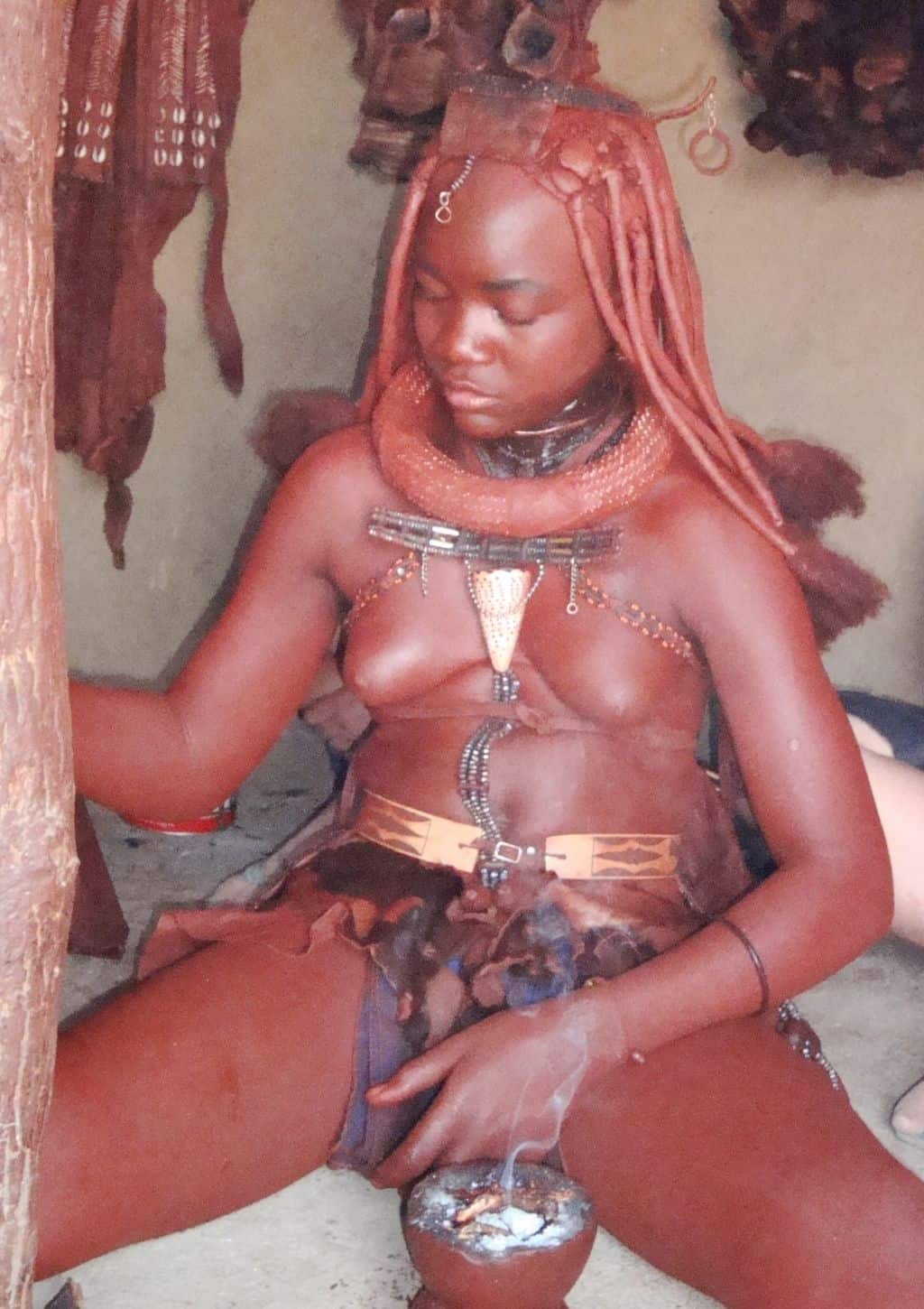
We sat and talked with the Himba women for some time through our translator. They asked me how old I was and if I had children. They giggled when they found that I was 29 and had no kids.
29 and no children??? How could that be??? Himba women traditional lymarry very young, often in their early teens.
We explained that in England and Australia, women often married and had children at all different ages and that some never do at all.
This caused the women to howl with laughter, although I’m sure they must have had that conversation with other tourists before. It was a funny exchange of cultures, but it also reminded me of the freedoms I take for granted.
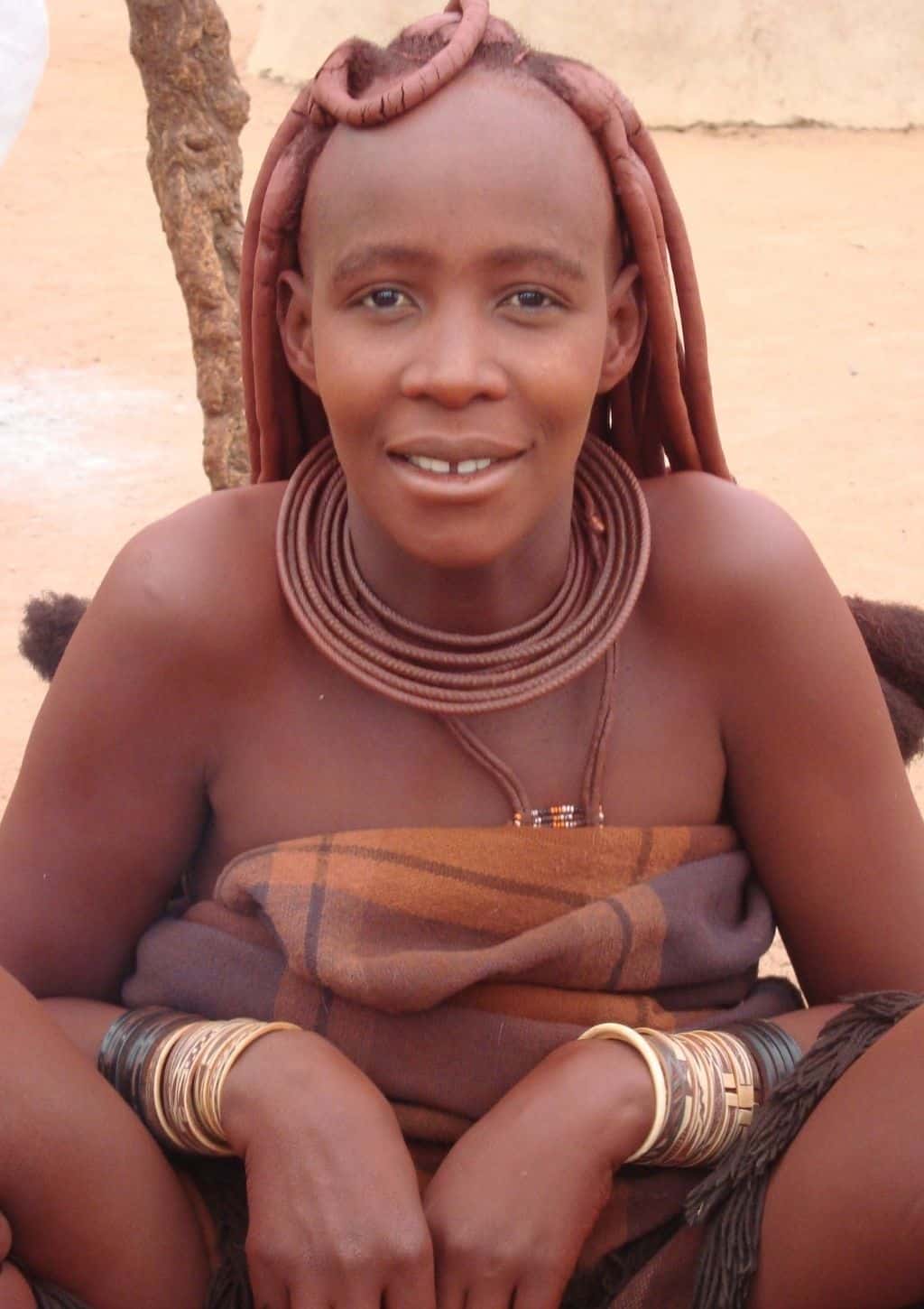
There were very few men around on the day we visited as most were out tending to the livestock. What I did find strange, was that the men that were there were not in traditional dress, preferring to wear more western attire such as shorts and football shirts.
I found this slightly strange and I wondered if the women dressed this way by choice, or whether they were made to dress this way for tourists. I wish I’d asked, but I didn’t feel that it was my place to do so.
Some years later, I found out that this wasn’t a ‘real’ village. Well, it was, but not in the traditional sense. The village was on the land of a large hotel and the Himba were allowed to live there for free in exchange for allowing tourists to visit.
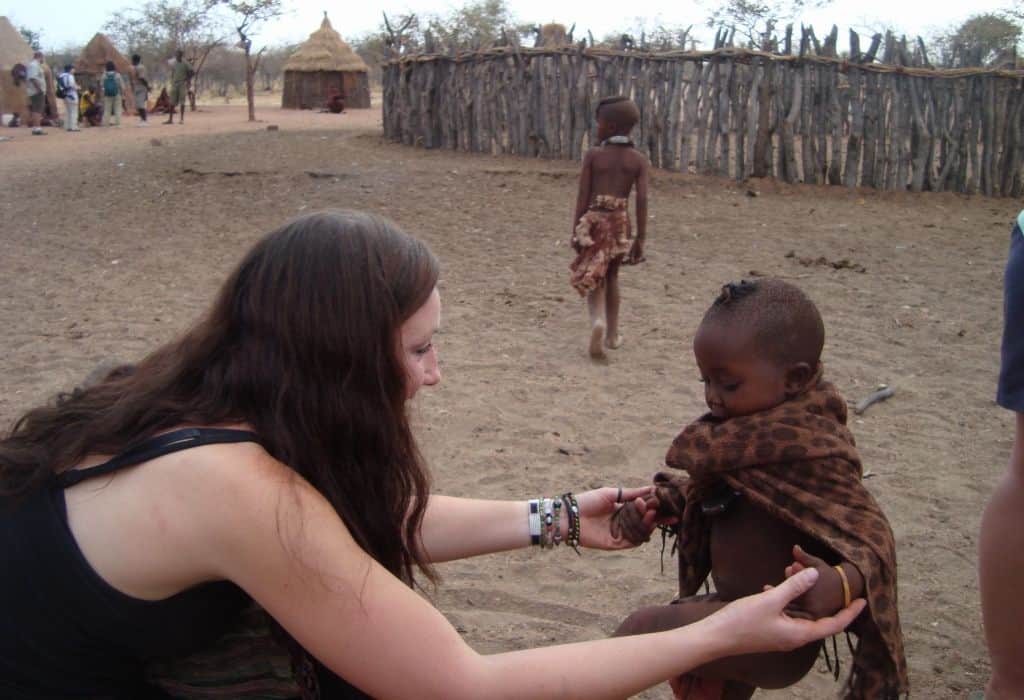
This village was near Swakopmund and Himba aren’t from this part of Namibia either, the Himba traditionally live in the far north of Nambia in Kaokoland, also known as the Kunene Region and in Southern Angola..
Some of the money will have been given to the Himba but the majority won’t. That doesn’t seem right to me. At the time I had no idea, but after spending a lot of time in Africa and a lot of time with tribal people, I know to do a little bit more research before I visit a tribe.
Over the years, I’ve visited tribes all over Africa and I now have many friends from tribal communities.

But some of the tribal visits I did in my early travel days, weren’t that great. Some were good, don’t get me wrong, but others felt contrived or exploitative and there often seemed to be a bit of a conflict between the guides who took us there and the tribes themselves – no doubt these arguments were over money.
These days, I’m much more conscious of the way I visit tribes and do my research before I visit. I know some people don’t agree with tribal visits, I do, as I think they play an important role in preserving heritages as tribal lands make way (or are forced out) for modern development.
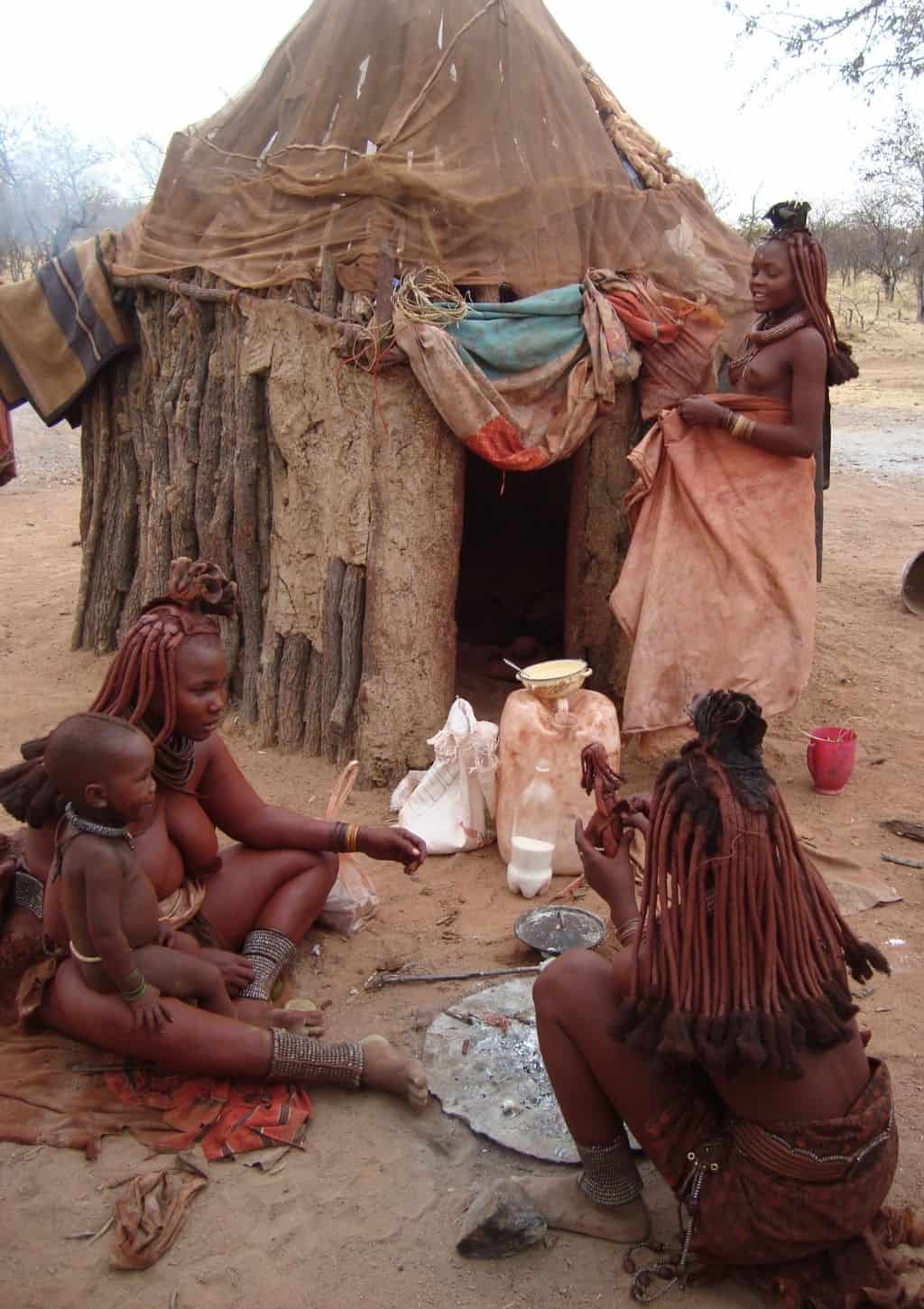
The Himba, like many tribal peoples, are caught between their traditional culture and the modern world.
I also think cultural exchange is one of the most beautiful things in the world. But I now visit villages that are run completely by the tribes themselves, on their own terms.
READ MORE: The Ethics of Visiting an African Tribe: What You Need To Know
I hope you have an AMAZING trip to Namibia. If you have any questions, please leave them in the comments below and I will happily answer!
Join one of my Namibia group tours or buy my Backpacking Africa e-book!
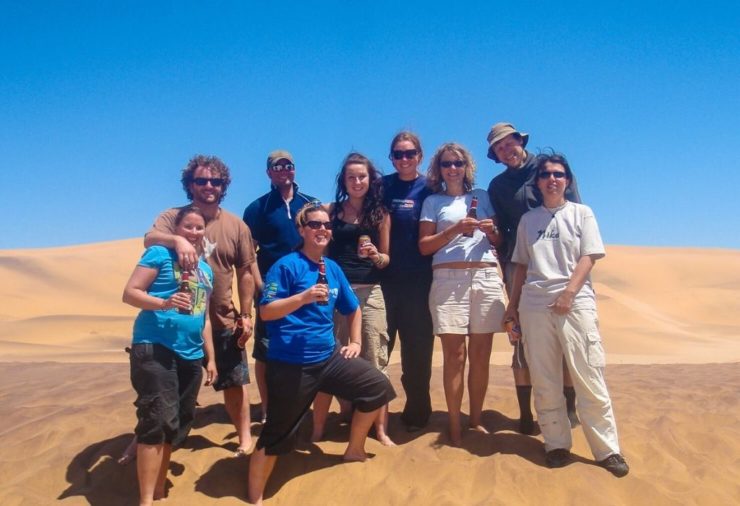
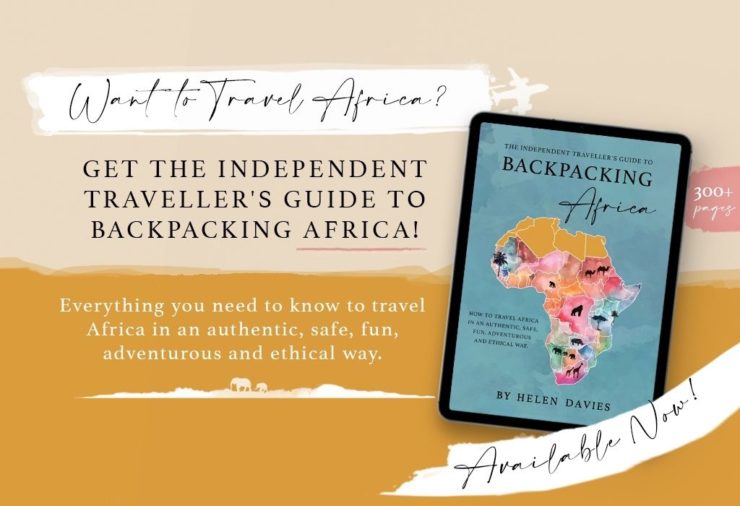

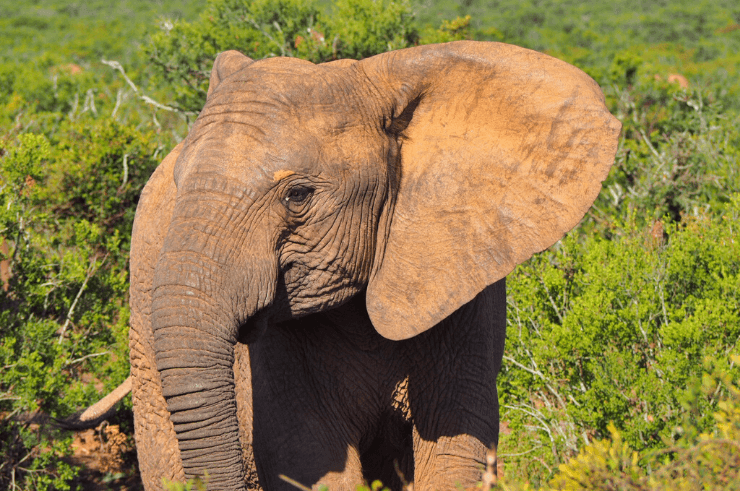
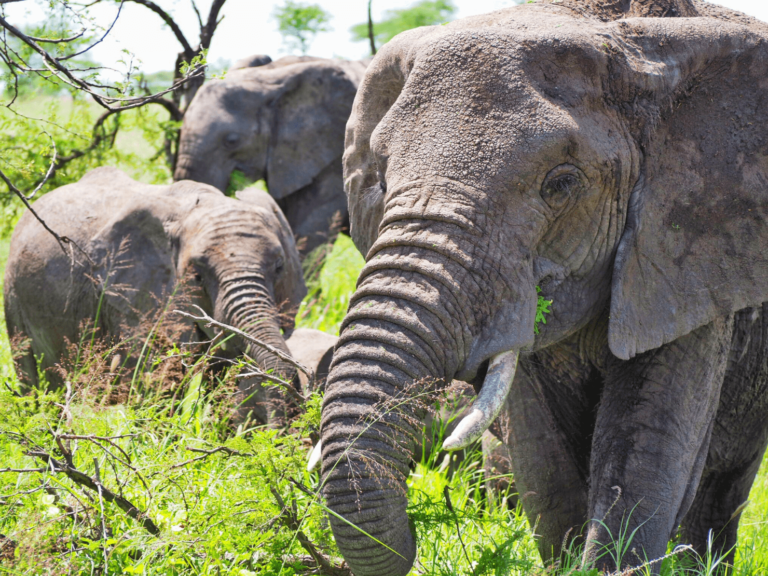
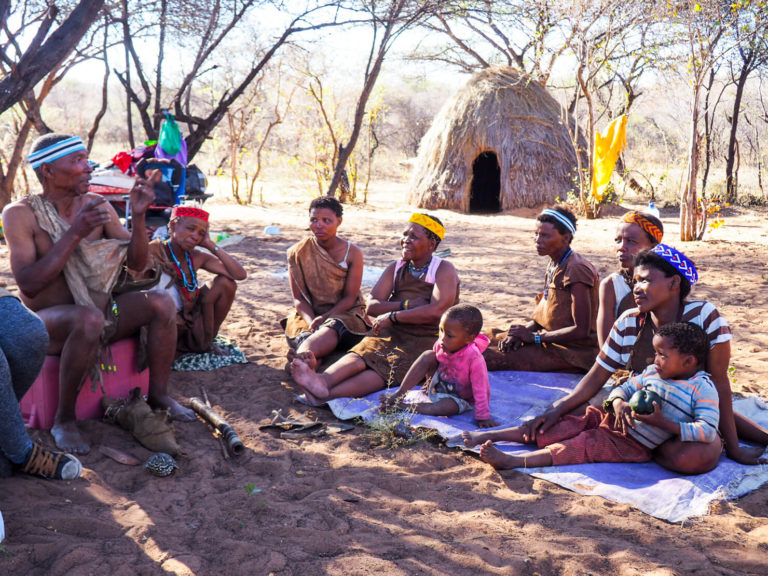

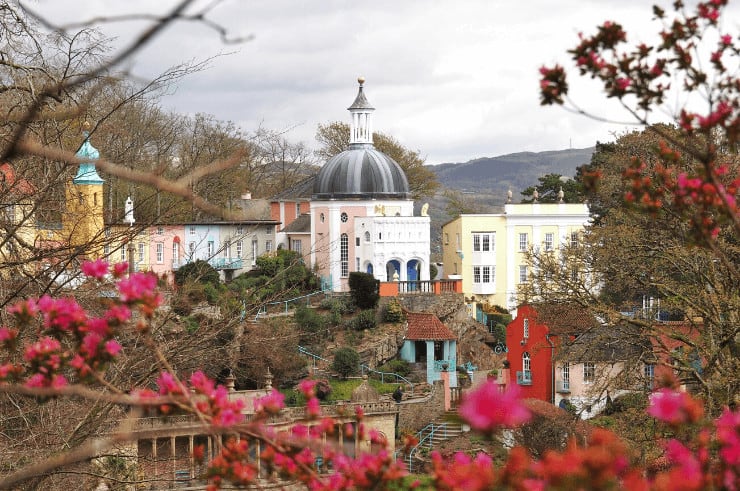
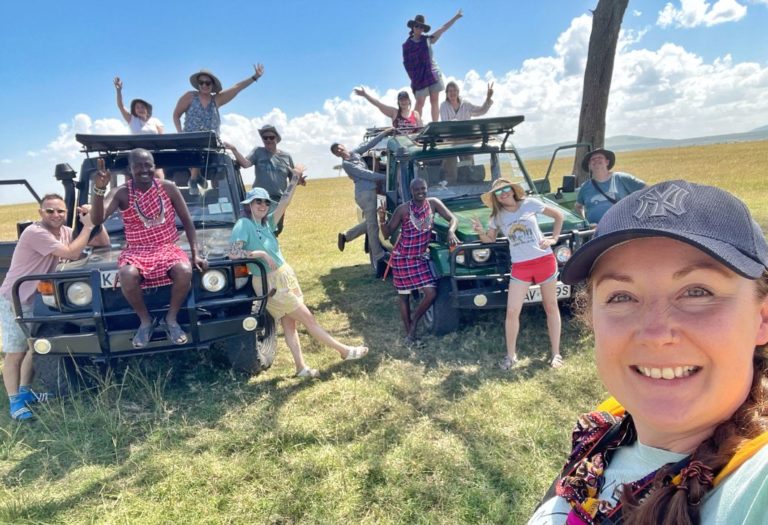
Amazing shots, Helen! What an incredible experience. And yes, I always get the, “29 and no kids AND no husband?!” talk.Â
Thanks Brenna, it was fab! Visiting tribes is one of my favourite things ever. Ha ha, yes they thought I was ‘past it’ for sure! 🙂 But I love the fact that cultures can be so different, and yet we can all sit there giggling together!
I love tribes too and I only photograp them every where,india especially.eliane
I’ve never been to India! Do you have any recommendations of places to go there?
rjesthan / madhya pradesh / gujarat in this state u will get good chance to meet different different tribe and there cultures rituals ..
Thank you for the tip! I’ve never been to India but hope to visit one day! I love to learn about different cultures!
OMG, I am in love with those babies. They are gorgeous!
They were gorgeous! I want to go back and see them! 🙂
Going there in September, so curieus …must have been so special!
It was Helen! Hope you have an amazing time in Namibia!
WOW, stunning photos!!
Thanks Zara!
This was such an interesting piece. It’s hard to write about cultures that are so alien compared to ours and not reduce them to a sensationalist detour on someone’s blog, but I think you did a good job of giving perspective to their situation. Interesting to know that the modern world is essentially impossible to shut out; there you were with your fancy camera and childless life!
Anyways, before I ramble, I’ll finish up by saying thanks for the photos, it was lovely to see a different way of life!
Thank you Sally! It was an unusual experience but a wonderful one. I hope to go back soon!
They are absolutely gorgeous. And the babies are adorable! However, I, too, am glad that I am not a Himba woman. As it is, I only spend about 10 minutes a day getting ready to leave because I can’t be bothered with much more.Â
I agree that it’s kind of weird that the women are in traditional dress and the men aren’t, but I think your decision not to ask was the right one. It’s a sensitive topic and so easy to offend without meaning to.
Hi Rebecca, thanks so much for your comment!
Yes, if I ever get to know the Himba women better, I may ask, but I agree, it was right not to ask.
Hello again! Great pictures! You managed to capture on your camera what i love most about african babies – their eyes! I enjoyed the pictures so much!
Hey Yana, how are you doing???
Thanks so much! xx
By the way, did you travel alone to Namibia? I’m thinking of going there in January ALONE and i need any advice out there….
Thanks again.
Yana
I went with Absolute Africa, but it would be fine to go alone! I can help with some recommendations of where to go and where to stay! I will email you! x
Such an amazing experience! I have been living in Namibia for the past year, and I can definitely say that my visits to the Opuwo area were certainly highlights. The Himba are such a fascinating ethnic group and I felt that the village tour was far less staged than others I have been on. I look forward to seeing your other posts about Namibia and southern Africa!Â
Thank you Erika!
Yes, I agree! Fascinating places and people! I just love the whole of Africa! I bet living in Namibia has been a fantastic experience!! 🙂
3 hours a day?! Wow, that’s intense!Â
I know! I can’t be bothered blow drying my hair, I would so be a bad Himba lady! 🙂
I loved the photos of the babies! They looked like old men conversing because they’re so animated!
They really do don’t they! They were really chatty, just so cute and lively! Thanks for reading!
Amazing shots and what an experience. I’ve never had the chance to meet a tribe – not yet anyway. I love that you taught them a few things about your culture too. 😉
I loved meeting the Himba. It was so interesting learning about their culture. So different from my own.
Am going with a girl friend in February. We will be driving on our own and my having visited several tribes in Ethiopia would love to visit the Himba. Could you tell me where to find them and if there are any other tribes that we might see or visit.
Loved all your photos and reading about your experience. Have you been to Ethiopia?
Hey Gretta, best way to see the Himba independently is to stay in Opuwo. There are plenty of Himba that live near there and they come in to town. From here, you will also be able to arrange a visit to a Himba village nearby. Most gesthouses will be able to do that for you. Make sure you get a guide/translator though so you can learn about the culture! I took my trip as part of an overland trip I was doing with Absolute Africa.
thanks helen for honour of himba woman and shot pic with coverd body . I thank you r very respected about himba woman
Hi Nitesh, I like to think I am respectful of tribal people and everyone else I hope. 🙂 I make sure that I ask before I take any photographs and they were comfortable with me doing so. Thank you for your comment!
i like this
Thank you!
Amazing photography! Especially kids and women portraits! I haven’t visited any tribes yet and Namibia is just on the top of my bucket list! I hope I could finally make it to the country any time soon!
Thank you! I absolutely love portrait photography but don’t get so much chance to do it! These were just on my really tiny, old Sony back up camera as my better camera broke with all the dust, but they turned out ok! Namibia is a pretty fabulous country to visit. Unlike anywhere I’ve ever been, totally surreal. 🙂
NICE PIC HELEN YOUR WELCOME TO TANZANIA EAST AFRICA THERE IS THE SAME TRIBE LIKE HIMBA KNOWN US SANDAWE
Hello Helen, I want to plan a trip to Namibia, dont have much time, want go Etosha, Skeleton Cost , and authentic Himba vilage, do you sugest other place there/things to do? Its best to plan the trip by myself or buy it ready? do you help plan the travel?
thanks
Hi Helen, Not sure if you’ll still see my post. Thanks so much for sharing your experience and beautiful photo’s. We will visit Namibia and also very interested to go to Opuwa to hopefully to see Himba and Herero tribe around. If we arrive in the afternoon would you recommend to stay only the next day or also the day after, so 2 days? W have our own car and was thinking to drive around and hoping to see Himba villages, or are those villages/communities sparsely? Thanks Karin
Hi Karin,
I would maybe stay 2 nights. Best thing to do is ask your campsite/lodge where to visit. Although be aware that all the lodges organise visits, so they will try to sell you those.
The more remote villages are harder to come across, but people do just drive about and try to find them – just be aware that not every village wants visitors. If you go to a remote village that isn’t usually visited by tourists, just be mindful of the fact that they may not be able to communicate with you in English and of taking photographs etc.
I knew a couple that went to a remote village one time and had a great time – they showed them how to fry and egg and everyone found it hilarious!
I would also recommend taking gifts, like grain/salt etc!
Hope that helps!